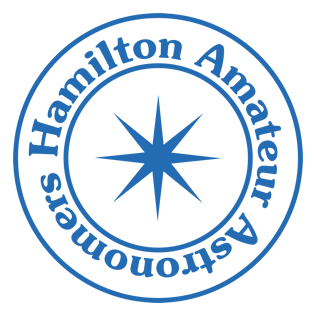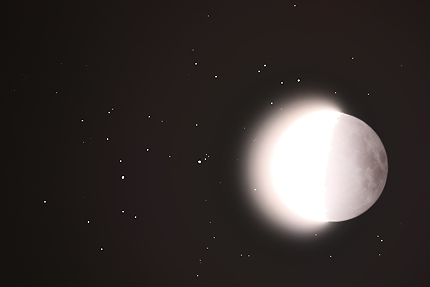As the evening started, Callisto and Io were on one side of Jupter while Ganymede and Europa were on the other side. Within a span of a few hours Ganymede moved in front of Jupiter, followed by Europa, then Ganymede’s shadow appeared and Europa’s too. Io then moved behind Jupiter, and just after the clouds rolled in Europa and Io would have both emerged into view again, within minutes of each other, but on opposite sides of the planet. Phew! That’s a lot, but it is what we observed tonight. Even better, it is also the kind of action that goes on every night and can be seen in even the smallest telescope.
Tonight, I used my Burgess 5″ achromat refractor and a variety of eyepieces. The best view came through a borrowed binoviewer, which really works well on bright objects like Jupiter. The globular cluster M13 was disappointing through the binoviewer, and M17, the Swan Nebula, was really neither better nor worse. Double stars and open clusters were very nice though.
Returning to Jupiter, it appeared as an apparent 3 dimensional disk, rich in detail. The seeing started out poor, but as Jupiter rose higher in the sky the image became rock steady, and we were able to follow not just the shadows, but the moons themselves across Jupiter’s face. Ganymede appeared as a large disk in front of the white equatorial zone, while Europa was visible, but barely. The shadows appeared inky black and showed considerable difference in size. Notice that although Europa was the second moon to move in front of Jupiter it was the first to move off. That is because it is closer to Jupiter than Ganymede, and moves much quicker in its orbit. While in front of Jupiter, Europa actually passed by Ganymede, like a race car on an inner track.
Every night it’s something different. What will if be tomorrow? Go out and see this spectacle for yourself, now showing in the sky above you!
(All right, I’m going to give you this one rather than make you look it up yourself. On Friday night (Saturday morning) at 2:30am, Io is going to graze Europa. From our perspective here on Earth the disks will appear to actually touch! Use the highest magnification that your scope and the atmospheric seeing conditions will allow, and enjoy!)
I look forward to reading your reports here on the blog, or email them to me ( observing@amateurastronomy.org )and I will be happy to share them.


